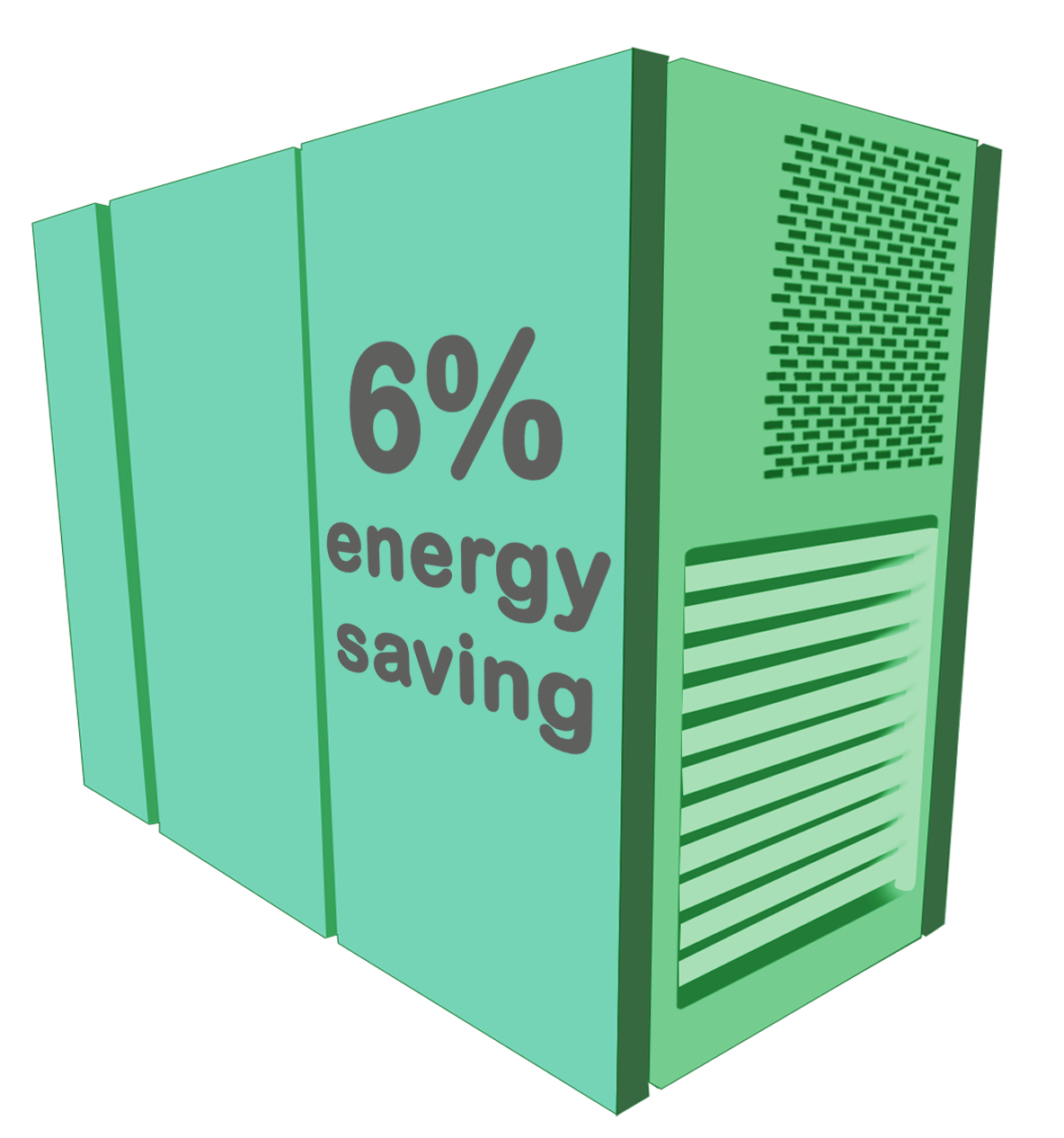Get Wiser
The Leaf: Issue 2 June 2021 – Our Plymouth Factory's Energy-saving Upgrades
How We’re Cutting Energy Usage And Carbon Emissions Across The Drayton Site
In forging our path to net zero, we’ve been targeting our largest source of emissions; our site’s gas and electrical energy use. Learn about the changes and upgrades we’ve made, along with our easy tips to help you save energy at home.
Read more topics at Wiser about Sustainability
15% of the UK's total greenhouse gas emissions originate from UK manufacturing. We recognise the responsibility we hold in the fight against greenhouse gas emissions and we believe a joint effort across all sectors is vital to the UK achieving its net zero targets by 2050. Our mission is to be a part of the solution, not the problem.
A Low Emission Electricity Supply
In 2018 Drayton changed to an alternative electrical energy supplier that means all electrical energy consumed on site is derived from 100% renewable sources, like wind and solar. We're committed to keeping our electricity supply sourced from 100% renewables for the long term.
Energy-Saving Upgrades In Our Factory
Whilst a switch to 100% renewably-sourced electricity reduced our electrical energy use carbon emissions by more than 90%, for us it’s not enough until we’ve explored every way we can help reduce our energy use. We’re continuing to invest in factory upgrades that don’t just increase efficiency, but allow us to be kinder to the planet.
An upgraded variable-speed air compressor saved 6% on our total factory electrical energy usage.
Switching from fluorescent to LED lighting saved 10% on our total electrical energy usage.
Cliff Horner
Drayton’s Maintenance and Facilities Manager, Cliff Horner, works tirelessly to not only keep our equipment and premises running day-to-day, but to investigate and implement ever more efficient options for everything from pneumatic factory machinery to office heating.
"We installed an Atlas Copco GA75 VSD compressor. The compressor replaced two old fixed speed units. The new compressor regulates its speed depending upon the load/demand from the factory. The reduced speed of the motor has returned significant savings in electricity particularly during the quieter backshifts.
We have changed all of the lighting in the production and warehouse areas for LED units. An old fluorescent fitting was using approximately 140w whereas the LED replacement is using approx. 70w. The downstairs office areas have also been changed. We are looking to do the canteen next."
- Cliff Horner, Maintenance and Facilities Manager, Drayton
What Are The Next Upgrades Planned At Drayton?
We won't stop until we've achieved net zero by 2025, and we have more changes planned to make it possible, as Cliff Horner explains:
"We are presently installing an Ethernet Network to connect all of the machines and production equipment in the factory. This network will allow us to monitor the machines in real time, particularly the energy usage. By studying the trends we hope to be able to identify further energy reductions. This network will be the foundation for Schneider Electric EcoStruxure.
"A project that I am looking at now is to try and reduce our Gas consumption. I am looking to install a Heat Exchanger on the new compressor. The compressor generates a lot of heat and is cooled with oil. We then cool the hot oil, in turn wasting further energy to cool the heat we have just generated! By installing a heat exchanger I can use the heat from the oil to heat water which I can then feed into the office heating system. It is anticipated we can save around 50% of the gas required to heat the offices and hot water for the toilets."
How Can We Save Energy At Home?
Reducing energy use in the manufacturing industry will put a significant dent in preventable carbon emissions, helping the UK move closer to its net zero goals. But there are simple steps we can all take to contribute to these goals at home. See our 10 tips to start saving more energy at home today:
- Turn down the heating - Research shows that turning heating down by just one degree could save up to £80 a year, and reduce your carbon footprint.
- Upgrade to smart heating - With better control of your heating via a Smart Thermostat, you'll only need to heat rooms you're using, and you'll have access to your system from your phone from anywhere with the ability to turn it off and adjust schedules to your lifestyle, saving money and energy. Upgrading from basic thermostat controls to smart controls could save up to 21% energy usage, and going Multi-Zone could save an additional 18% energy usage!
- Put smart home technology to work - Smart Plugs enable you to control all sorts of electrical devices, letting you set schedules to take them off standby overnight and while you're out, with control from your phone to save energy and enhance convenience. You can even integrate the Wiser plug with Alexa and Google Assistant!
- Insulate your loft - Whilst a more expensive option, there are government schemes to help homeowners cover some of the cost of installing insulation, an upgrade that could save the average semi-detached house £135 per year on their energy bills.
- Make your next appliance A+++ rated - When it's time to replace an older appliance, check the efficiency rating. For example, an A+++ rated fridge freezer saves around £320 more in energy bills over its lifetime compared to an A+ rated model.
- Switch to all LED light bulbs - Enjoy energy savings AND longer light bulb lifespans.
- Wash at lower temperatures - Most laundry deteregents now are designed to get clothes just as clean at lower temperatures, so ditch the high temperature cycles to save more energy.
- Cook using the correct size hob ring - When we're busy preparing meals we might not think too much about which hob we're using, but using the most appropriate hob size for the pot or pan you're using can help prevent wasted energy.
- Be smart with your fridge freezer- The more you open the fridge or freezer, the harder it has to work to keep the temperature down. Only open when necessary to save electricity.
- Unplug your chargers - It's an easy one to overlook, but with so many rechargeable devices in our homes it's an important one. Chargers still draw power when left plugged in, so unplug or turn them off at the mains when no longer in use to save electricity. Gone out and left a charger plugged in? When connected to a smart plug you can turn it off from anywhere to save energy.
Read more topics and tips at Wiser about Sustainability
Want to see what sustainability-related awareness days are coming up? Browse our list below and our tips on how to get involved. And when you do, why not tag us in your social posts and you could be featured in a future edition of The Leaf! Follow @DraytonHome on Facebook and Instagram.
Plastic-free July
Plastic Free July® is a global movement that helps millions of people be part of the solution to plastic pollution – so we can have cleaner streets, oceans, and beautiful communities. Will you be part of Plastic Free July by choosing to refuse single-use plastics? Get information, try the quiz and Take The Challenge today.
Love Parks Week 2021: 12th - 21st Jul
Organised by Keep Britain Tidy, Love Parks Week is a rallying cry to encourage Britian to love, respect and protect our parks, inviting the public to join the campaign. #LoveParks
National Marine Week 2021: 23rd Jul - 1st Aug
National Marine Week is The Wildlife Trusts’ nationwide celebration of all things marine. Despite the name, it lasts 15 fun-filled days to allow for the variation in tide times around the country. Whether you're getting out there and enjoying marine life first-hand or taking small steps at home to help safeguard marine habitats, like saving energy and reducing our carbon footprint, we can all get involved. #NationalMarineWeek
Read more topics and tips at Wiser about Sustainability










